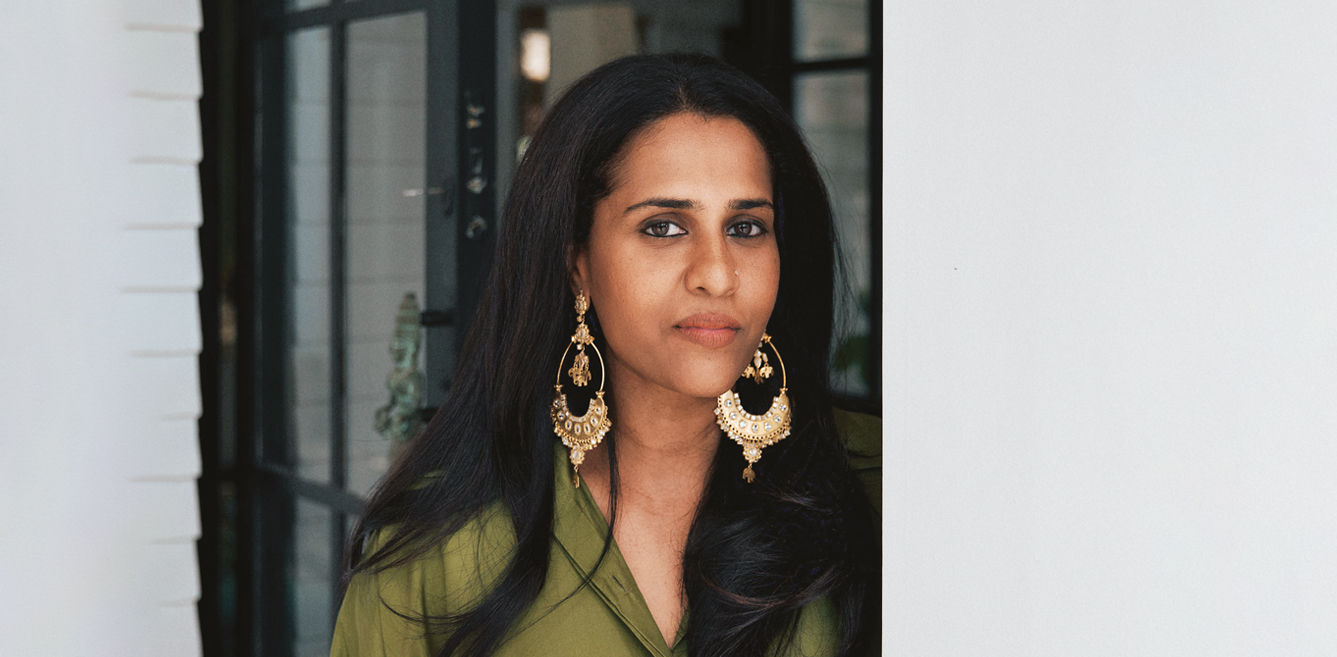

SZ Design‘s creative head Smitha Zachariah’s mood board process is rooted in a single defining element—the carpet. Serving as the foundation of her design narrative, it anchors the space and dictates the overarching mood. With this as a starting point, she layers colours, textures, and materials to create a cohesive and immersive story, ensuring that every design choice aligns with the core vision of the project. In our February 2025 issue, we dissect her process, from start to final execution, and discover how she masters the art of design through her moon boards. Read on to know more!
How has your mood board creation process evolved with digital tools, and what balance do you strike between physical and digital elements in your conceptual phase?
As an interior designer with a love for colour and intricate details, my mood board process has evolved significantly with digital tools. Platforms and softwares let me organize palettes, patterns, and textures seamlessly, offering endless possibilities to refine compositions and visualize ideas efficiently. Yet, the tactile joy of physical elements remains irreplaceable. Handling fabric swatches, feeling textures, and layering samples bring colours to life in ways digital tools cannot. I balance both by beginning digitally, setting a thematic foundation, then incorporating physical elements for depth and authenticity. This blend enriches my conceptual phase, making it dynamic and inspiring.
Walk us through your thought process when you begin a new mood board – what elements do you consider first, and how do you layer colours, textures, and materials to build your narrative?
When starting a new mood board, I always begin with the carpet—it serves as the grounding element and the centrepiece of my narrative. This anchoring point informs the story I want to tell and sets the tone for the entire space. From there, I layer inspiration images, carefully curating a print language and iconography tailored to the project’s essence. My approach to color is deeply instinctive; I continuously layer, add, and edit until the palette feels just right. This process of refinement extends beyond the mood board, evolving on-site and continuing until the final piece of art is perfectly in place.
How do you use mood boards to communicate with clients, and what techniques have you developed to help them understand your vision through these visual tools?
Mood boards are an essential visual tool for communicating my design vision to clients. They act as a curated collection of images, colours, textures, and materials that evoke the mood and aesthetic we aim to achieve. My process starts with an in-depth consultation to understand the client’s lifestyle, preferences, and project goals. From there, I create a digital or physical mood board that reflects our discussion, featuring images of furniture, finishes, colour palettes, and design elements. These boards serve as a tangible representation of the concept, making it easier for clients to visualize the final outcome and provide meaningful feedback.
Can you share an example of a project where the mood board played a pivotal role in shaping the final design outcome? What were the key elements that translated most successfully from concept to reality?
One of our recent projects, an India-modern home crafted for the most wonderful clients, perfectly exemplifies how a mood board can shape the final design outcome. The home’s soul was deeply rooted in craft and the essence of modern India. Our mood board served as a blueprint, capturing every detail—from colours, textures, and yarns to tile patterns and wall finishes. It became a visual starting point that guided the entire process. In this project, the translation from mood board to reality was seamless, achieving an exceptional level of accuracy and bringing the envisioned space to life with beauty and precision.
Grab a copy of our February 2025 issue to read the full story! Click here to subscribe!
Are you a corporate employee spending 10+ hours in an ordinary cubicle that's fused in…
Modern Indian homes are no longer bound by their physical vicinity. They have outgrown our…
Häcker Kitchens, a brand synonymous with quality and innovation, has a rich legacy that spans…
In this home designed by Sonal R Mutha and Aniketh Bafna, founders and principal designers…
Essentia Home’s journey in redefining luxury interiors took a bold new step as it opened…
Retail design is a balancing act. Between creating spaces that attract and those that sell,…